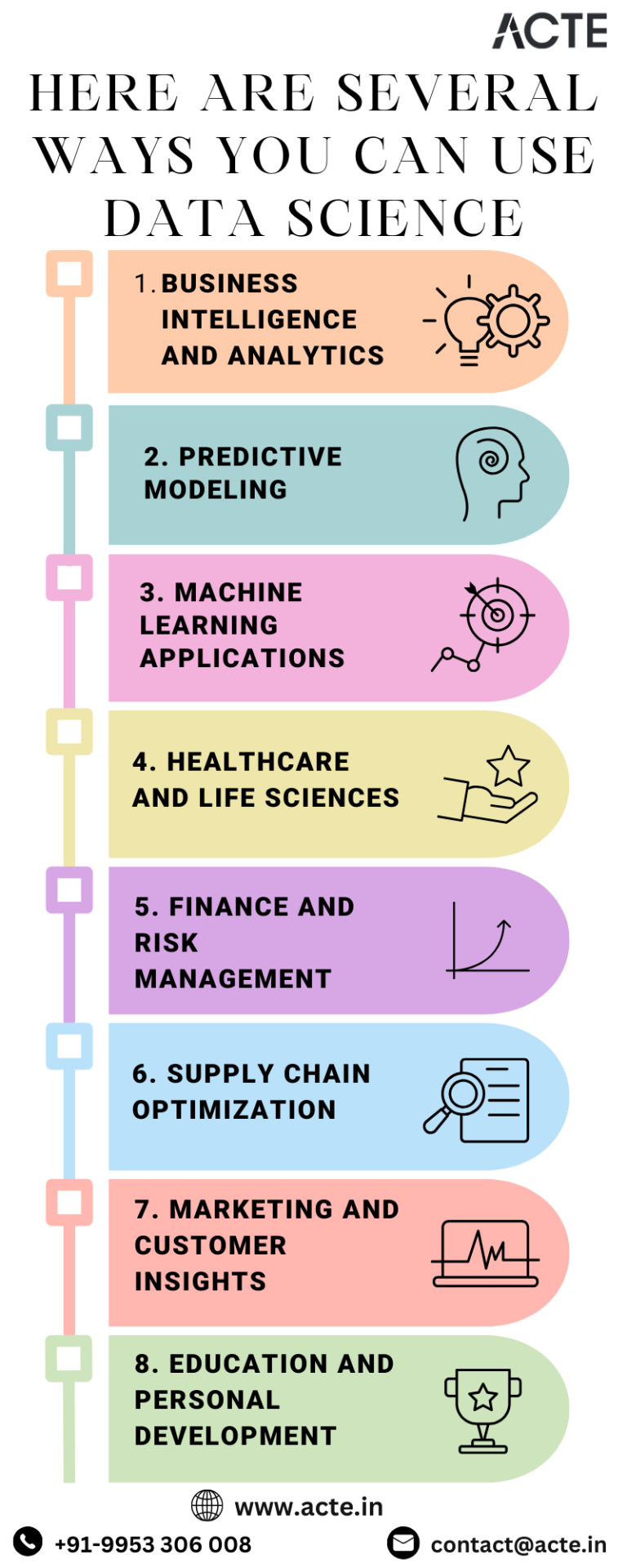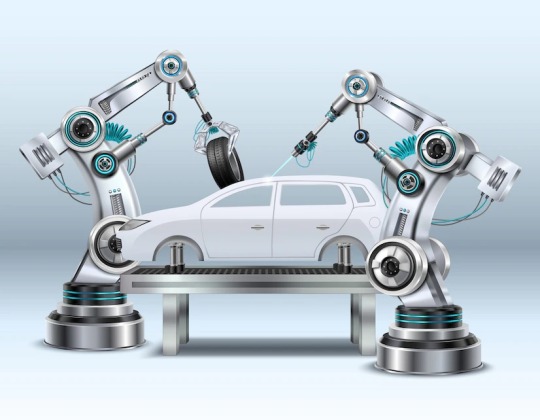#Medical Imaging Market Growth
Explore tagged Tumblr posts
Link
#market research future#medical imaging market#medical imaging market size#medical imaging market trends#medical imaging market growth
0 notes
Text
Medical Imaging Devices Market 2024 Size, Share, Global Industry Overview, Trends and Growth Analysis 2032

The global Medical Imaging Devices Market Revenue is poised for substantial growth in the coming years, according to the latest report by SNS Insider. With the market projected to experience significant expansion, advancements in imaging technology, coupled with increasing prevalence of chronic diseases, are creating a favorable environment for the adoption of cutting-edge medical imaging devices. This growth trajectory reflects the crucial role these technologies play in diagnostics, treatment planning, and improving overall patient care.
Recent innovations in the medical imaging sector, including the adoption of artificial intelligence (AI), machine learning, and data-driven solutions, have transformed how healthcare professionals assess, diagnose, and monitor health conditions. These innovations not only enhance the accuracy of medical diagnoses but also improve workflow efficiency in healthcare settings. Key devices such as MRI machines, CT scanners, ultrasound, and X-ray systems continue to evolve, enabling higher resolution images, faster processing times, and enhanced safety for patients. These advancements are expected to fuel sustained growth in the medical imaging devices market.
A growing demand for non-invasive diagnostic techniques is also propelling the market forward. The increasing incidence of conditions like cancer, cardiovascular diseases, and orthopedic disorders has led to a heightened need for advanced imaging solutions. With an expanding global elderly population, the demand for diagnostic imaging continues to rise, as age-related health issues become more prevalent. In addition to serving diagnostic needs, the capabilities of medical imaging devices are broadening to facilitate precision medicine and minimally invasive procedures, further underscoring their value within modern healthcare.
Get Free Sample Report@ https://www.snsinsider.com/sample-request/2989
Market Drivers and Challenges
The medical imaging devices market is witnessing unprecedented growth opportunities, thanks to supportive government policies, increased healthcare spending, and a surge in hospital and diagnostic center infrastructure. In many developing countries, governments are making strategic investments to enhance their healthcare capabilities, enabling greater access to high-quality imaging services. The establishment of public-private partnerships to bridge healthcare gaps has further boosted the accessibility of advanced diagnostic technologies.
However, the market is not without its challenges. High costs associated with advanced imaging devices and the need for skilled professionals to operate and interpret these devices pose barriers to widespread adoption, especially in low-income regions. Regulatory and compliance considerations, such as FDA approvals and radiation safety standards, also impact the pace of market expansion. Nevertheless, manufacturers are increasingly focusing on affordable, scalable solutions and training programs to address these challenges, which are anticipated to fuel further market penetration.
Key Market Segments and Growth Prospects
The report by SNS Insider categorizes the medical imaging devices market by product type, technology, end-user, and geography, providing a comprehensive analysis of growth prospects within each segment. Among product types, MRI and CT scanners are expected to witness substantial demand due to their versatility and effectiveness in diagnosing complex medical conditions. Additionally, advancements in ultrasound technology and the increasing adoption of hybrid imaging systems in oncology and cardiology are driving the market forward.
The Asia-Pacific region, led by countries like China, India, and Japan, is projected to experience the fastest growth rate due to rapid healthcare infrastructure development, increased healthcare spending, and an aging population. North America, particularly the United States, remains a dominant market due to its well-established healthcare facilities, a high prevalence of chronic diseases, and an ongoing push toward value-based healthcare.
Technological Innovations and Future Outlook
The future of medical imaging devices lies in continued innovation, as companies leverage AI and data analytics to enhance imaging capabilities and outcomes. AI-driven solutions are transforming imaging interpretation, enabling faster and more accurate diagnostics by analyzing large volumes of data in real time. Furthermore, AI algorithms are being integrated into imaging platforms to assist radiologists in identifying abnormalities, reducing human error, and supporting personalized patient care.
Looking ahead, cloud-based solutions and tele-imaging are anticipated to play a pivotal role in improving accessibility to diagnostic imaging in remote and underserved areas. As telehealth services expand globally, cloud-based imaging platforms are enabling radiologists to interpret images from any location, facilitating timely and efficient diagnosis. With the integration of these advanced solutions, the medical imaging devices market is well-positioned for sustained growth and innovation.
About Us:
SNS Insider is one of the leading market research and consulting agencies that dominates the market research industry globally. Our company's aim is to give clients the knowledge they require in order to function in changing circumstances. In order to give you current, accurate market data, consumer insights, and opinions so that you can make decisions with confidence, we employ a variety of techniques, including surveys, video talks, and focus groups around the world.
Contact Us:
Akash Anand – Head of Business Development & Strategy [email protected] Phone: +1-415-230-0044 (US) | +91-7798602273 (IND)
#Medical Imaging Devices Market#Medical Imaging Devices Market Size#Medical Imaging Devices Market Share#Medical Imaging Devices Market Growth#Market Research
0 notes
Text
https://twikkers.nl/blogs/250871/Medical-Imaging-Outsourcing-Market-Analysis-Size-Share-and-Forecast-2031
The Medical Imaging Outsourcing Market in 2023 is US$ 7.88 billion, and is expected to reach US$ 11.66 billion by 2031 at a CAGR of 5.02%.
#Medical Imaging Outsourcing Market#Medical Imaging Outsourcing Market Growth#Medical Imaging Outsourcing Market Research
0 notes
Text
Medical Imaging Equipment Market to See Massive Growth by 2030

Global Medical Imaging Equipment Market Report from Market Research Forecast highlights deep analysis on market characteristics, sizing, estimates and growth by segmentation, regional breakdowns & country along with competitive landscape, player’s market shares, and strategies that are key in the market. The exploration provides a 360° view and insights, highlighting major outcomes of the industry. These insights help the business decision-makers to formulate better business plans and make informed decisions to improved profitability. In addition, the study helps venture or private players in understanding the companies in more detail to make better informed decisions. Major Players in This Report Include, GENERAL ELECTRIC COMPANY (U.S.), Hitachi, Ltd. (Japan), Shimadzu Corporation (Japan), Siemens Healthcare GmbH (Germany), Koninklijke Philips N.V. (Netherlands), Hologic, Inc. (U.S.), Samsung (South Korea), Fujifilm Holdings Corporation (Japan). Free Sample Report + All Related Graphs & Charts @: https://marketresearchforecast.com/report/medical-imaging-equipment-market-800/sample-report The Medical Imaging Equipment Market size was valued at USD 38.16 USD Billion in 2023 and is projected to reach USD 58.14 USD Billion by 2032, exhibiting a CAGR of 6.2 % during the forecast period.Medical imaging is the activity responsible for making images of the human body for installative or research issues. Through diagnostics, it enables to explore and discover ailments as well as provides detailed information in medical training. Likewise, health service professionals have instant access to the disease condition, thus allowing for a better quality of care to the patients. With the advent of advanced medical imaging technology and equipment, medical professionals are now getting unsurpassed aid for early detection and treatment of disease that were unthinkable few years ago. The Medical Imaging Equipment category features collections of Ultrasound Machines, Mammography Systems, Colposcopes, and X-ray machines. The end users of the different Medical Equipment include radiologists among others, Angiography, Mobile radiography, Fluoroscopy, and Trauma radiography are few. Medical imaging will allow the doctors to be better docs and they will easily able to see the patients bones, organs, tissue structures and blood vessels through non-invasive way. Procedural Medicine, as well as other processes, give the competency to the healthcare workers to diagnose and treat various health conditions precisely. Specifically targeting tumors, discovering blood clots, and guiding doctors with joint problems, these instruments are used to pinpoint disease and injury. These techniques are one of the instruments by which healthcare providers endeavor to make sure that the patients get the best treatments that will ultimately lead to good and favorable outcome. to utilize the robotic assistants in surgeries, including stent or catheter placement; and if fractures and further procedures are required.
Market Trend
Point-of-care imaging devices
Hybrid imaging systems
Image-guided therapy
Telemedicine and remote imaging
Challenges
High cost of equipment and maintenance
Concerns regarding radiation exposure
Skilled workforce shortage
Regulatory compliance and accreditation challenges
Enquire for customization in Report @: https://marketresearchforecast.com/report/medical-imaging-equipment-market-800/enquiry-before-buy In this research study, the prime factors that are impelling the growth of the Global Medical Imaging Equipment Market report have been studied thoroughly in a bid to estimate the overall value and the size of this market by the end of the forecast period. The impact of the driving forces, limitations, challenges, and opportunities has been examined extensively. The key trends that manage the interest of the customers have also been interpreted accurately for the benefit of the readers. The Medical Imaging Equipment Market study is being classified by Application (Cardiology, Neurology, Orthopedics, Gynecology, Oncology, and Others), by End User (Hospitals, Specialty Clinics, Diagnostic Imaging Centers, and Others), by North America (U.S., Canada), by Europe (U.K., Germany, France, Italy, Spain, Scandinavia, Rest of Europe), by Asia Pacific (China, Japan, India, Australia, Southeast Asia, Rest of Asia Pacific), by Latin America (Brazil, Mexico, Rest of Latin America), by Middle East & Africa (GCC, South Africa, Rest of Middle East & Africa) Forecast 2024-2032 The report concludes with in-depth details on the business operations and financial structure of leading vendors in the Global Medical Imaging Equipment Market report, Overview of Key trends in the past and present are in reports that are reported to be beneficial for companies looking for venture businesses in this market. Information about the various marketing channels and well-known distributors in this market was also provided here. This study serves as a rich guide for established players and new players in this market. Get Reasonable Discount on This Premium Report @ https://marketresearchforecast.com/report/medical-imaging-equipment-market-800/request-discount Extracts from Table of Contents Medical Imaging Equipment Market Research Report Chapter 1 Medical Imaging Equipment Market Overview Chapter 2 Global Economic Impact on Industry Chapter 3 Global Market Competition by Manufacturers Chapter 4 Global Revenue (Value, Volume*) by Region Chapter 5 Global Supplies (Production), Consumption, Export, Import by Regions Chapter 6 Global Revenue (Value, Volume*), Price* Trend by Type Chapter 7 Global Market Analysis by Application ………………….continued This report also analyzes the regulatory framework of the Global Markets Medical Imaging Equipment Market Report to inform stakeholders about the various norms, regulations, this can have an impact. It also collects in-depth information from the detailed primary and secondary research techniques analyzed using the most efficient analysis tools. Based on the statistics gained from this systematic study, market research provides estimates for market participants and readers. Contact US : Craig Francis (PR & Marketing Manager) Market Research Forecast Unit No. 429, Parsonage Road Edison, NJ New Jersey USA – 08837 Phone: +1 201 565 3262, +44 161 818 8166 [email protected]
#Global Medical Imaging Equipment Market#Medical Imaging Equipment Market Demand#Medical Imaging Equipment Market Trends#Medical Imaging Equipment Market Analysis#Medical Imaging Equipment Market Growth#Medical Imaging Equipment Market Share#Medical Imaging Equipment Market Forecast#Medical Imaging Equipment Market Challenges
0 notes
Text
Sharper Diagnoses, Brighter Futures: Medical X-ray Image Processor Sector Poised for Exponential Growth in the Next Decade
As we stand on the cusp of a new era in medical diagnostics, the Medical X-ray Image Processor market is poised for a groundbreaking journey from 2024 to 2032. In an age where precision and speed are paramount in healthcare, the advancements in X-ray image processing technologies are set to redefine diagnostic capabilities, ushering in an era of unparalleled clarity and efficiency
1. A Technological Odyssey
The forecast for the Medical X-ray Image Processor Market from 2024 to 2032 promises a technological odyssey that will reshape the landscape of medical imaging. From enhanced image resolution to real-time processing capabilities, the coming decade holds the key to unlocking new frontiers in diagnostic precision.
Get a sample: https://www.econmarketresearch.com/request-sample/EMR00467
2. Precision Imaging for Superior Diagnoses
At the heart of this transformation is the commitment to precision imaging. The Medical X-ray Image Processor Market is gearing up to deliver sharper, clearer images that allow healthcare professionals to make more accurate and timely diagnoses. This emphasis on precision is expected to significantly impact the treatment planning and outcomes for a myriad of medical conditions.
3. Navigating the Complexities of Healthcare
As healthcare continues to grapple with an aging population and the rise of complex medical conditions, the demand for advanced diagnostic tools becomes more pronounced. The forecasted surge in the Medical X-ray Image Processor Market is a response to the growing need for sophisticated imaging solutions capable of navigating the intricacies of modern healthcare challenges.
4. Advancements in Artificial Intelligence Integration
One of the pivotal trends driving the forecasted growth is the seamless integration of artificial intelligence (AI) in X-ray image processing. Machine learning algorithms are poised to enhance diagnostic accuracy by assisting radiologists in identifying patterns, anomalies, and potential areas of concern. This synergistic relationship between human expertise and AI capabilities is anticipated to redefine the diagnostic workflow.
5. Radiology's Renaissance: A Clearer Future
The anticipated growth of the Medical X-ray Image Processor Market heralds a renaissance in radiology. The coming decade promises not just incremental improvements but a leap forward in imaging technologies. Radiologists and healthcare professionals can expect a paradigm shift as the market introduces innovations that go beyond the limits of current imaging capabilities.
6. Addressing Healthcare Disparities
The forecasted surge in demand for advanced X-ray image processors is not just about technological advancements; it's also about addressing healthcare disparities. The market aims to make cutting-edge diagnostic tools more accessible globally, bridging the gap between developed and developing regions. This inclusivity is expected to contribute to more equitable healthcare outcomes worldwide.
7. Enhanced Imaging Modalities for Specialized Applications
Beyond general diagnostics, the Medical X-ray Image Processor Market is projected to witness a proliferation of enhanced imaging modalities catering to specialized applications. From cardiovascular imaging to musculoskeletal assessments, these advancements are poised to provide tailored solutions for various medical disciplines, enabling more precise and targeted treatments.
8. Market Projections and Growth Metrics
Market analysts anticipate a robust compound annual growth rate (CAGR) for the Medical X-ray Image Processor Market during the forecast period, with a projected market value of [USD Y Billion] by the end of 2032. These figures underscore the confidence in the market's potential to not only meet but exceed the growing demands of the healthcare industry.
9. Driving Economic Growth Through Innovation
The forecasted growth in the Medical X-ray Image Processor Market is not only a boon for healthcare but also a driver of economic growth. The innovation-driven market is expected to spur investments in research and development, creating employment opportunities and contributing to the economic well-being of regions at the forefront of this technological revolution.
10. Sustainability in Healthcare Technology
As the world becomes increasingly cognizant of environmental sustainability, the Medical X-ray Image Processor Market is aligning with this ethos. Manufacturers are exploring eco-friendly materials, energy-efficient technologies, and streamlined production processes to minimize the environmental footprint of these critical medical devices.
Read more details: https://www.econmarketresearch.com/industry-report/medical-x-ray-image-processor-market/
0 notes
Text
Global Proton Therapy Market Is Estimated To Witness High Growth Owing To Increasing Adoption of Proton Therapy in Cancer Treatment

The global Proton Therapy Market is estimated to be valued at US$ 2,763.2 million in 2023 and is expected to exhibit a CAGR of 13.0% over the forecast period 2023-2030, as highlighted in a new report published by Coherent Market Insights. A) Market Overview: Proton therapy is an advanced form of radiation therapy that uses protons instead of X-rays to treat cancer. It is a precise and targeted treatment option that delivers high doses of radiation directly to the tumor while minimizing damage to surrounding healthy tissues. Proton therapy offers several advantages over conventional radiation therapy, including reduced side effects, shorter treatment duration, and improved quality of life for patients. The increasing incidence of cancer worldwide, coupled with the growing demand for effective and less invasive treatment options, is driving the growth of the proton therapy market. B) Market Key Trends: One key trend in the global proton therapy market is the increasing adoption of proton therapy in pediatric oncology. Proton therapy has proven to be a safe and effective treatment option for children with cancer. Its precision and targeted nature reduce the risk of long-term side effects in pediatric patients, such as growth retardation and developmental delays. Furthermore, proton therapy allows for higher radiation doses to be delivered to tumors while sparing healthy tissues, resulting in better treatment outcomes for children with cancer. For example, the Proton Therapy Center at Massachusetts General Hospital treated over 2,500 pediatric patients since its establishment in 2001. C) PEST Analysis: - Political: Government initiatives and regulations supporting the adoption of proton therapy for cancer treatment are driving market growth. For example, in the United States, the Medicare program covers proton therapy for certain types of cancer. - Economic: The high cost of proton therapy equipment and treatment is a major barrier to market growth. However, advancements in technology and increasing reimbursement support are expected to reduce the cost burden. - Social: The rising prevalence of cancer globally and the increasing awareness about the benefits of proton therapy among patients and healthcare professionals are driving market growth. - Technological: Continuous advancements in proton therapy technology, such as improved imaging techniques, treatment planning systems, and proton accelerator designs, are fueling market growth. D) Key Takeaways: - The global Proton Therapy Market is expected to witness high growth, exhibiting a CAGR of 13.0% over the forecast period, due to the increasing adoption of proton therapy in cancer treatment. - North America is the fastest-growing and dominating region in the global proton therapy market, attributed to the presence of advanced healthcare infrastructure, high healthcare expenditure, and favorable reimbursement policies. - Key players operating in the global proton therapy market include Hitachi Ltd., Ion Beam Applications S.A., Mevion Medical Systems, Mitsubishi Electric Corporation, Provision Healthcare, ProTom International, Sumitomo Heavy Industries, Varian Medical Systems, Optivus Proton Therapy Inc., and Advanced Oncotherapy plc. In conclusion, the global proton therapy market is witnessing high growth due to the increasing adoption of proton therapy in cancer treatment. The ability of proton therapy to deliver precise and targeted radiation while minimizing damage to healthy tissues makes it an attractive option for patients and healthcare professionals. Advancements in technology and favorable government initiatives are further driving market growth. North America is expected to dominate the market, with key players focusing on research and development to enhance their product offerings and expand their presence in the proton therapy market.
#Healthcare#Medical Imaging#Proton Therapy Market#Proton Therapy Market Growth#Proton Therapy Market Analysis#Proton Therapy Market Forecast#Proton Therapy Market Overview#Proton Therapy Market Orientation
0 notes
Text
Near Infrared Medical Imaging Market Is Estimated To Witness High Growth Owing To Technological Advancements And Increasing Prevalence of Chronic Diseases
The global Near Infrared Medical Imaging Market is estimated to be valued at US$ 2.06 billion in 2022 and is expected to exhibit a CAGR of 3.9% over the forecast period 2023-2030, as highlighted in a new report published by Coherent Market Insights.
A) Market Overview:
Near Infrared Medical Imaging involves the use of near-infrared (NIR) light to capture images of tissues and organs within the human body. It provides real-time visualization and analysis of blood flow, oxygen saturation, and tissue viability, making it an essential tool for various medical applications. The technology finds extensive use in cardiovascular, oncology, neurology, and other fields where precise visualization is crucial for accurate diagnosis and treatment planning.
B) Market Dynamics:
The Near Infrared Medical Imaging Market is driven by two key factors: technological advancements and the increasing prevalence of chronic diseases.
1. Technological Advancements:
Advancements in imaging technology have significantly improved the capabilities of near-infrared medical imaging devices. Newer devices offer high-resolution images with enhanced accuracy and depth penetration, providing healthcare professionals with a clearer view of the internal structures. For example, companies such as Bruker Corporation and Carl Zeiss Meditec AG are developing innovative NIR imaging systems with improved image quality and user-friendly interfaces, contributing to market growth.
2. Increasing Prevalence of Chronic Diseases:
The rising incidence of chronic diseases such as cardiovascular disorders, cancer, and neurological conditions has created a substantial demand for efficient diagnostic tools. Near infrared medical imaging enables early detection and accurate assessment of these diseases, allowing for timely intervention and improved patient outcomes. This has propelled the adoption of NIR imaging systems in hospitals, diagnostic centers, and research facilities worldwide.
C) Market Key Trends:
One key trend in the Near Infrared Medical Imaging Market is the integration of artificial intelligence (AI) algorithms to enhance image analysis and interpretation. AI-powered software can detect abnormalities and assist healthcare professionals in diagnosing and monitoring diseases more efficiently. For instance, PerkinElmer, Inc. is collaborating with AI technology companies to develop advanced image analysis software, which can automatically identify and classify anomalies in near-infrared medical images.
D) SWOT Analysis:
Strengths:
1. Advanced imaging technology: Near infrared medical imaging devices offer high-resolution images with improved depth penetration.
2. Growing demand for efficient diagnostic tools: Increasing prevalence of chronic diseases drives the adoption of NIR imaging systems.
Weaknesses:
1. High costs: Near infrared medical imaging devices are expensive, limiting their accessibility in certain regions.
2. Limited awareness among healthcare professionals: Some healthcare professionals may not be fully aware of the potential benefits of near-infrared medical imaging technology.
Opportunities:
1. Emerging markets: The expanding healthcare infrastructure in developing economies presents significant opportunities for market growth.
2. Technological advancements: Continued research and development in imaging technology can further enhance the capabilities and applications of near-infrared medical imaging devices.
Threats:
1. Regulatory challenges: Stringent regulatory requirements for medical devices may pose a challenge for market growth.
2. Competition from alternative imaging modalities: Near-infrared medical imaging faces competition from other imaging modalities such as MRI and CT scans.
E) Key Takeaways:
- The global Near Infrared Medical Imaging Market is expected to witness high growth, exhibiting a CAGR of 3.9% over the forecast period.
- Technological advancements and the increasing prevalence of chronic diseases drive market growth.
- North America is expected to dominate the market, owing to its well-established healthcare infrastructure and high adoption rate of advanced medical technologies.
- Key players operating in the global Near Infrared Medical Imaging Market include Bruker Corporation, Carl Zeiss Meditec AG, Shimadzu Corporation, PerkinElmer, Inc., MIZUHO Corporation, Karl Storz GmbH, and NOADAQ Technologies, Inc.
In conclusion, the Near Infrared Medical Imaging Market is poised for significant growth in the coming years, driven by technological advancements, increasing chronic diseases, and the integration of AI algorithms.
#Near Infrared Medical Imaging Market#Near Infrared Medical Imaging Market Insights#Near Infrared Medical Imaging Market Growth#Near Infrared Medical Imaging Market Trends#Coherent Market Insights
0 notes
Text
#Artificial Intelligence in Medical Imaging Market Size#Artificial Intelligence in Medical Imaging Market Share#Artificial Intelligence in Medical Imaging Market Trends#Artificial Intelligence in Medical Imaging Market Growth#Artificial Intelligence in Medical Imaging Market Demands#Artificial Intelligence in Medical Imaging Market Opportunities#Artificial Intelligence in Medical Imaging Market scope#Artificial Intelligence in Medical Imaging Market value#Artificial Intelligence in Medical Imaging Market Strategies#Artificial Intelligence in Medical Imaging Market Analysis.
0 notes
Text
Help Rebuild Lives in Gaza: Support Families in Crisis
These Funds will help 4 families from Gaza stay alive campaign link: https://gofund.me/80d75b89
I am Mohammed, and I urgently need your help to support four families in Gaza who are facing life-altering challenges due to ongoing conflict. Your compassionate contributions will provide essential medical care, daily necessities, and a chance for these families to rebuild their lives.

Mohammed Nasser: A Story of Resilience in Gaza
I am Mohammed Nasser, currently displaced in Zawaida, living in a small tent with my family. Before the violence escalated on October 7, I worked as a digital marketer, which allowed me to provide for my loved ones. Unfortunately, I lost my laptop—my primary source of income—due to the conflict, leaving my family vulnerable.

These images reflect my significant losses, showing the many job opportunities I’ve missed due to the conflict. Each one was a chance for growth and crucial support for my family, highlighting our urgent need for assistance in this challenging time.

My Mother And Father
My elderly parents urgently need medical care. My mother suffers from rheumatoid arthritis and requires Humira injections, along with daily medications for hypertension. My father also struggles with hypertension and needs continuous monitoring. Your support can help restore stability and provide the medical resources my family desperately needs.

Humira Injection

The Medical Report of My Mother The Medical Report of My Mother

Marwan Nasser: A Lawyer’s Fight for Family Safety
My brother, Marwan Nasser, is a dedicated lawyer whose life was turned upside down when his law firm was destroyed. Together with his wife, Nisreen, and their two young children, Niraz (4) and Lilia (1), Marwan is striving to protect his family from the psychological effects of the ongoing conflict. The sounds of war have left Niraz anxious and fearful. Marwan seeks help to ensure his family’s safety and well-being during this tumultuous time.

Your contributions will help Marwan create a secure environment for his children, allowing them to thrive despite the chaos around them.
Loay: A Determined Student’s Journey
Loay, my brother, is a bright student who dreams of completing his education despite the hardships of living in a conflict zone. His commitment to learning is unwavering, but he faces significant challenges in accessing resources. With your support, Loay can continue his studies and work towards a brighter future for himself and his family.

Diana Anan: A Mother’s Hope for a Safe Future
Diana Anan, my sister, is a devoted mother of two daughters, Jenan (8) and Lelyan (7). After losing their home and several family members to airstrikes, Diana strives to create a safe environment for her children. The trauma of war weighs heavily on them, and her heartfelt wish is to give her daughters a hopeful future free from fear.

Madleen Hamadeh: A Mother’s Heartfelt Plea for Help
Madleen Hamadeh, also a sister and mother to three young children—Yousef (6), Amir (5), and Maram (1.5)—has seen her family’s joy eroded by war. Their home was bombed, and the emotional toll on her children is profound. Madleen seeks help to provide her kids with basic needs like food and clean water, aiming to restore some normalcy to their lives.

How Your Donations Will Help Families in Gaza
Your generous contributions will directly support these families in the following ways:
● Medical Care for Elderly Parents:
○ Humira Injections: $2,400
○ Knee Treatment: $4,000
○ Blood Pressure Medications: $500
○ Ongoing Treatments: $500
● Daily Living Expenses for Families in Gaza:
○ Clean Water: $2,520/year
○ Healthy Food: $24,000/year
○ Clothes: $7500/year
● Emergency Expenses:
○ Transportation and urgent needs: $8,000
● Educational Needs for Children:
○ Laptops and school supplies: $4,000
● Professional Restart Costs:
○ Laptop for Work: $1,000
○ Office Equipment: $3,000
○ Solar energy and batteries: $2500
Total Needed: $58,000
"Every donation is a lifeline, a chance to rewrite the future for those in need. Your support can bring hope and healing to families facing unimaginable challenges. Join us in making a difference—share this campaign within your community and let’s transform lives together. Together, we can turn compassion into action and create a brighter tomorrow for all."
#free gaza#gaza genocide#gazaunderattack#free palestine#gaza strip#palestinian genocide#save palestine#i stand with palestine#end israeli occupation#palestinian liberation
2 notes
·
View notes
Text

[BANKSY]
* * * *
LETTERS FROM AN AMERICAN
October 27, 2023
HEATHER COX RICHARDSON
OCT 28, 2023
An article this morning jumped out at me. Catherine Rampell of the Washington Post noted that the U.S. economy “looks remarkably good.” A recent stunning jobs report, showing that the economy continues to add jobs at record rates—more than 13.9 million since President Joe Biden took office—along with yesterday’s stunning report that U.S. economic growth grew at an annual pace of 4.9% in the third quarter of this year, puts the U.S. economy at the forefront of most of the world. And inflation is back in the range that the Federal Reserve prefers—it’s at 2.4%, close to the Fed’s target of 2%.
The U.S. is outperforming forecasts made even before the pandemic began for where the economy would be now, even as other countries are worse off.
And yet, Rampell notes, Americans are about as negative about the economy today as they were during the Great Recession after 2008, when mortgage foreclosures were forcing people out of their homes and unemployment rested at about 9%, more than twice what it is today. In contrast, consumers give high marks to the Trump years, when average growth before the pandemic was 2.5% and the U.S. added only about 6.4 million jobs.
There is a crucial divorce here between image and reality. Americans think our economy, currently the strongest in the world, is in poor shape. They mistakenly believe it was better under Trump.
That profound and measurable disjunction ought to make us sit up and take notice, especially as the Biden administration continues to try to make the economy responsive to ordinary Americans and the country continues to pay little attention. Today, for example, the White House announced an effort to turn the dual problems of empty office buildings and a shortage of affordable housing into a win-win. It announced a series of actions to convert vacant commercial properties to residential buildings. Their efforts are designed to create affordable, energy-efficient housing near public transportation and jobs.
The importance of identifying the contrast between image and reality in today’s politics showed recently as the meticulous work of Nashville investigative reporter Phil Williams of Tennessee’s NewsChannel 5 appears to have had an important effect on the mayoral election in Franklin, Tennessee.
While far-right Christian nationalist mayoral candidate Alderman Gabrielle Hanson promised she was “committed to restoring and upholding the wholesome values that have long been the foundation of our city’s identity,” Williams exposed to voters Hanson’s shady history. He showed that Hanson had lied about having multiracial supporters and her ties to white supremacists, highlighted her bizarre behavior, and noted her embrace of Christian nationalism.
On Tuesday, voters overwhelmingly rejected Hanson and other far-right candidates. Hanson won just 20.6% of the vote to 79.4% for the incumbent mayor. Then, after losing, Hanson apparently had her husband drop off her computer and ID badge at City Hall, abandoning her term as alderman before its November 14th end.
Such deep investigation stands out in an increasingly turbulent sea of disinformation. Shayan Sardarizadeh of the BBC explained to Hanaa’ Tameez of Neiman Journalism Lab that social media posters on platforms like TikTok, YouTube, or Twitter can make significant sums of money from “engagement farming.” Posting outrageous material that engages viewers pumps up a user’s brand, making them able to command high prices from marketers.
Sardarizadeh notes that the Israel-Hamas war is a particularly attractive situation for engagement farmers, and rumors and fake videos are flying.
But there are plenty of opportunities for disinformation at home, too, for political purposes. In Ohio, the Republican-controlled Ohio Senate is using its official government website to push what Associate Press legal and medical experts say is “false or misleading” information against the proposed constitutional amendment the state’s voters will consider in the November 7 election. Their inflammatory language warns, for example, that the measure will “legalize abortion on demand at any stage of pregnancy” and permit “the dismemberment of fully conscious children,” the rhetoric of anti-abortion activists.
Julie Carr Smyth and Christine Fernando of the Associated Press report that Republicans began their “On the Record” blog on the state Senate website after Ohio voters rejected their attempts to make it much harder to pass constitutional amendments. The Republicans bill the blog as an “online newsroom” where voters can find “the views the news excludes.” Republican Senate president Matt Huffman denied that the blog was a news service, but it sits under the “News” tab on the Senate’s website.
“My [Republican] colleagues say that this is done because the mainstream media won’t print their stuff,” Democratic state senator Bill DeMora told the reporters. “But of course, the mainstream media won’t pick this up because it’s factually incorrect and basically lies.”
But because the blog appears on an official government website, internet searches turn it up as a reliable source. Laura Manley, executive director of the Shorenstein Center on Media, Politics and Public Policy at the Harvard Kennedy School, told Smyth and Fernando: “It’s a really strategic way to make something appear to be neutral information and fact when that’s not the reality…. I’ve never seen anything like that.”
Finally, after a two-day manhunt, law enforcement officers found Maine mass murder suspect Robert Card dead tonight from a self-inflicted gunshot. Reports suggest that Card had at least a recent history of mental illness and note that his social media accounts show a history of engagement with right-wing and Republican political content.
—
LETTERS FROM AN AMERICAN
HEATHER COX RICHARDSON
#Banksy#peace#Letters From An American#Heather Cox Richardson#political#media#social media#misinformation
14 notes
·
View notes
Text
Healthcare Industry with Custom AI Software Development - SSTech System

We are living in an era of technology. By glancing around, it is obvious that technology has affected every inch of our lives. Artificial Intelligence (AI) is the contemporary technological trend. It is reshaping the entire landscape. Healthcare is no exception. AI Software Development of today is having a great influence on how medical care is delivered nowadays.
AI-driven web development has brought a very important change in the way patients are diagnosed. It has not only changed the way doctors diagnose and treat patients but also how patients manage their health. Custom AI software development truly has been revolutionized as the game-changer. It also provides a good foundation for creativity and saving.
Would you like to find out about the ways AI is transforming the healthcare sector?If yes, read on! In this article, we are going to expose the way AI is changing healthcare.
AI & Healthcare Web Development
AI in Healthcare can be a very effective option of efficient healthcare. It can empower the healthcare sector more than ever before. It improves medical outcomes. This adds to the fact that it improves operations and results in cost and time savings. Well, it is not just a passing fad, but it is a trend that will remain forever.
According to data, the worldwide AI market is poised for remarkable growth. It is set to grow at an anticipated compound annual growth rate (CAGR) of 37.3% between 2023 and 2030. By 2023, it is expected to soar to a staggering $1,811.8 billion, showcasing the immense potential and rapid expansion of the AI industry.
With the emergence of AI, healthcare businesses are quickly shifting to custom AI software. It empowers them to make the best of the power of AI tailored. They can tailor the solutions as per their unique requirements.
Are you also planning to level up your healthcare business? If so, AI software development can be beneficial. Wondering how? Let’s move to the next section, where we will tell you some key benefits of custom AI software development.
Benefits Of Custom AI Software Development
AI is growing massively. It has impacted businesses across sectors. If we talk about Healthcare, AI has made things super easy. Below are some key benefits of AI software development:
Enhanced diagnostic accuracy:
Custom AI solutions for your healthcare business enable to make the analysis of large amounts of medical data. It is also able to analyze patient records, laboratory results, and imaging scans.
This however is not the only advantage; AI algorithms are also able to uncover patterns. Moreover, it can recognize abnormalities which human eyes may miss. Generally, this brings about better diagnoses and prompts treatment.
Personalized treatment plans:
AI-driven insights assist healthcare professionals in the creation of individualized treatment plans. They may personalize medical solutions to patients’ needs. It harnesses patient data, genetic information, and treatment history. It assists in suggesting tailored strategies.
Improved operational efficiency:
AI-enabled automation decreases clerical duties. For instance, it assists with appointment scheduling, billing, and inventory management. Thus, they can devote more time to patient care. It also helps in the integration of AI into the existing workflow. It will increase efficiency and productivity in the organization as a whole.
Predictive analytics:
AI has the superior predictive power. Developing AI healthcare software can pre-empt disease outbreaks, anticipate bed demand, and identify high-risk patients. It allows for proactive planning and resource allocation. AI algorithms can furnish strategic decision-makers with actionable insights to guide strategic decision-making and resource planning.
Enhanced patient engagement:
AI-driven chatbots and virtual assistants are always on standby to extend support to patients. It answers their questions anytime. Moreover, it provides medication reminders, as well as tailored health suggestions. You can hence build an AI chatbot and integrate it into websites and applications.
We have seen how AI can improve healthcare. However, are you aware of the common AI applications in the healthcare industry? Let’s find out!
Custom AI Solutions for Healthcare
AI can be used in multiple ways. Here, we have listed down some typical custom AI solutions in the medical industry:
AI-enabled diagnostics:
Custom AI algorithms can analyze medical images. It helps radiologists in X-rays, MRIs, and CT scans in detecting abnormalities and identifying disease. AI-powered diagnostic tools offer rapid and accurate results.
Predictive analytics:
Custom AI models can analyze electronic health records (EHRs). It also allows for demographic data, and environmental factors to predict disease trends, identify at-risk populations. With predictive analytics, healthcare providers can intervene proactively.
Remote patient monitoring:
Custom AI software enables remote monitoring of patients with chronic conditions. AI algorithms can analyze real-time data from wearable devices, sensors, and IoT devices to detect deviations from normal parameters and alert healthcare providers to potential issues. It enables timely interventions and preventing complications.
Drug discovery and development:
Custom AI solutions accelerate the drug discovery process by analyzing vast datasets, simulating molecular interactions, and predicting drug efficacy and safety profiles. AI-driven drug discovery platforms expedite the identification of promising drug candidates, reducing costs and time-to-market for new therapies.
AI Software Development Tools
Well! When it comes to AI software development tools, you get a variety of options. Here, we have noted the most important tools that can make a positive difference for your business:
Machine learning libraries:
Tools such as TensorFlow, PyTorch, and sci-kit-learn provide potent frameworks for developing custom AI models tailored to healthcare applications. These libraries offer a wide range of machine-learning algorithms and tools for data preprocessing, model training, and evaluation.
Natural language processing (NLP) tools:
NLP frameworks like spaCy and NLTK enable the development of AI-driven chatbots and virtual assistants for healthcare applications. These tools support text processing, sentiment analysis, and language understanding, facilitating the creation of conversational interfaces for patient engagement and support.
Deep learning platforms:
Deep learning frameworks such as Keras and MXNet offer advanced capabilities for developing custom AI models, including convolutional neural networks (CNNs), recurrent neural networks (RNNs), and generative adversarial networks (GANs). These platforms empower healthcare organizations to leverage state-of-the-art deep learning techniques for image analysis, natural language processing, and predictive modelling.
Custom AI software development has become crucial for businesses. Professional AI/ML developer helps in unlocking the full potential of AI by providing the best-in-class custom healthcare software development services for the healthcare industry.
With AI revolution in healthcare lets you enhance diagnostic accuracy, personalize treatment plans, improve operational efficiency, and empower patients to take control of their health. SSTech System a professional AI software development company, the future of Healthcare holds great potential for innovation, efficiency, and improved patient outcomes.
Final words
AI software development services for healthcare are no less than a paradigm shift in medical technology. It allows for a smarter and more efficient way of medical care and healthcare app development. If you are also a healthcare business and looking to integrate AI into your healthcare business, it is time for you to go professional. So what are you waiting for? Hire AI developers today and take your business to new heights.
#AI Solutions for Healthcare#Hire AI developers#AI software development#software development#sstech system#healthcare industry#Custom AI software#Healthcare Web Development#healthcare#b2b
2 notes
·
View notes
Text
Healthcare IT Integration Market Size Expected to Reach USD 11.16 Billion by 2030
The global Healthcare IT Integration market size, which was valued at USD 4.38 billion in 2022, is anticipated to witness remarkable growth, reaching USD 11.16 billion by 2030. This projection reflects a robust Compound Annual Growth Rate (CAGR) of 12.4% over the forecast period spanning from 2023 to 2030.
The increasing demand for efficient healthcare delivery systems, coupled with the rising adoption of electronic health records (EHRs) and other digital solutions, is driving the growth of the Healthcare IT Integration market. Healthcare organizations worldwide are realizing the significance of integrating disparate systems and applications to streamline workflows, improve patient care, and enhance operational efficiency.
Key Market Segments:
The Healthcare IT Integration market is segmented by Products & Services type, End User, and Regions:
Products & Services Type:
Products: Interface Engines, Media Integration Software, Medical Device Integration Software, Other Integration Tools
Services: Support and Maintenance Services, Implementation and Integration Services (Training and Education Services, Consulting Services)
End User:
Hospitals
Clinics
Diagnostic Imaging Centers
Laboratories
Other End Users
Regions: The global market forecast covers various regions across the globe.
Market Outlook:
The increasing adoption of electronic health records (EHRs) and healthcare information exchange (HIE) solutions is propelling the demand for Healthcare IT Integration products and services. Interface engines and integration software play a pivotal role in connecting disparate systems within healthcare organizations, enabling seamless data exchange and interoperability.
Moreover, the emergence of advanced technologies such as artificial intelligence (AI), machine learning (ML), and blockchain in healthcare is further driving the need for robust IT integration solutions. These technologies require seamless integration with existing healthcare IT infrastructure to harness their full potential in improving patient outcomes and optimizing healthcare processes.
As healthcare providers continue to prioritize interoperability and data exchange to support value-based care initiatives and enhance patient engagement, the demand for Healthcare IT Integration solutions is expected to witness significant growth in the coming years.
2 notes
·
View notes
Text
Empowering Decision-Making: Unlocking the Potential of Data Science Across Industries
In the era of information abundance, data has become a formidable asset. However, the real distinction for successful enterprises lies in their ability to derive meaningful insights from this vast sea of data. Enter data science – a field that transcends mere analysis and offers a transformative lens through which industries can innovate, optimize, and thrive. Opting for the Best Data Science Institute can further expedite your journey into this burgeoning industry. In this blog, we will delve into the diverse applications of data science across various sectors, spotlighting its pivotal role in steering informed decision-making and fostering innovation.

1. Business Intelligence and Analytics: Revealing Patterns for Growth
At the heart of data science is the ability to unravel intricate patterns within extensive datasets. For businesses, this translates into a powerful tool for business intelligence and analytics. By harnessing historical and current data, organizations can gain valuable insights into their performance, identify trends, and make informed decisions that drive growth. Whether optimizing operational processes or uncovering opportunities for expansion, data science serves as a compass for strategic decision-making.
2. Predictive Modeling: Forecasting the Future with Confidence
Predictive modeling stands out as one of the hallmark applications of data science. By analyzing historical data, organizations can develop models that forecast future trends and outcomes. This capability proves invaluable across various domains. In finance, predictive modeling aids in anticipating stock prices; in healthcare, it contributes to predicting patient outcomes. The ability to foresee potential scenarios empowers decision-makers to plan and strategize with confidence.
3. Machine Learning Applications: Infusing Intelligence into Applications
Machine learning, a subset of data science, takes analytical power a step further by enabling intelligent applications. From recommendation systems in e-commerce to fraud detection in finance and image recognition in healthcare, machine learning algorithms bring a layer of automation and adaptability to diverse domains. This not only enhances user experience but also improves the efficiency and effectiveness of various processes.
4. Healthcare and Life Sciences: Revolutionizing Patient Care and Research
In the realm of healthcare, data science acts as a catalyst for transformation. From patient diagnosis to personalized treatment plans and drug discovery, data-driven insights are revolutionizing the industry. Analyzing large datasets allows medical professionals to identify patterns, tailor treatment strategies, and accelerate medical research, ultimately leading to better patient outcomes.
5. Finance and Risk Management: Navigating Uncertainty with Data-Driven Insights
Financial institutions leverage the power of data science for risk assessment, fraud detection, and portfolio optimization. Predictive analytics aids in forecasting market trends, managing risks, and making informed investment decisions. In an industry where every decision carries significant consequences, data science provides a reliable compass for navigating uncertainties. Choosing the finest Data Science Courses in Chennai is a pivotal step in acquiring the necessary expertise for a successful career in the evolving landscape of data science.
6. Supply Chain Optimization: Enhancing Efficiency from End to End
Optimizing supply chain operations is a complex endeavor, but data science offers a clear path forward. By utilizing data to forecast demand, manage inventory effectively, and optimize logistics, organizations can achieve substantial cost savings and improve overall operational efficiency. From manufacturers to retailers, data science is reshaping how businesses approach the end-to-end supply chain process.
7. Marketing and Customer Insights: Tailoring Strategies for Success
In the realm of marketing, data science emerges as a game-changer. Analyzing customer behavior, preferences, and engagement patterns allows marketers to create targeted campaigns that resonate with their audience. The ability to derive actionable insights from data enhances customer experience, improves satisfaction, and maximizes the impact of marketing initiatives.
8. Social Media Analysis: Decoding Trends and Sentiments
The digital era has ushered in an abundance of social media data, and data science plays a crucial role in making sense of this vast landscape. By analyzing social media data, businesses can extract valuable insights into user behavior, sentiment, and trends. This information is instrumental in shaping social media strategies, engaging with the audience effectively, and managing online reputation.
9. Smart Cities and Urban Planning: Paving the Way for Sustainable Living
In the context of urban planning, data science contributes to the development of smart cities. By analyzing data from sensors, traffic cameras, and citizen feedback, urban planners can optimize city infrastructure, improve traffic flow, and enhance overall urban living. Data-driven insights play a pivotal role in creating sustainable and livable urban environments.
10. Education and Personal Development: Shaping the Future of Learning
Data science is making significant inroads into education, where it is utilized to analyze student performance, tailor learning materials, and provide personalized recommendations. This not only enhances the learning experience for students but also facilitates adaptive learning platforms. The application of data science in education is reshaping how we approach teaching and learning, with a focus on individualized and effective educational experiences.

As we delve deeper into the era of big data, data science stands as a beacon of innovation and progress. Its applications span across industries, touching every facet of modern life. From healthcare and finance to education and urban planning, data science is shaping the way we make decisions, solve problems, and envision the future. Embracing the power of data science is not just a choice; it's a necessity for those looking to thrive in a data-driven world.
3 notes
·
View notes
Text
Remembering Olympic Gold Medalist Florence 'Flo-Jo' Griffith Joyner
— September 21, 2023 | By Ashley Montgomery

Florence Griffith-Joyner Celebrates with Her Gold Medal after Winning the Women's 100 Meters Final Event During the 1988 Summer Olympic Games in Seoul, South Korea. Tony Duffy/Allsport/Getty Images
Twenty-five years ago, Olympic gold medalist Florence Griffith Joyner, better known as "Flo-Jo," died in her sleep.
Known for her style — long painted nails and colorful one-legged running suits — Griffith Joyner was also celebrated for being the fastest woman to run the 100 meter and 200 meter sprints.

The 1988 Summer Olympics in Seoul
Griffith Joyner broke the 100 Meter World Record with a time of 10.49 seconds during the Olympic qualifiers in 1988.
Griffith Joyner broke the 200 Meter World Record during the 1988 Summer Olympics in Seoul, South Korea. Griffith Joyner, Gwen Torrence and Evelyn Ashford were teammates for the USA Team and wore red and white leotards. Griffith Joyner was in lane five, wearing a gold bracelet on each wrist and gold earrings.
At the start of the race, as the camera focused on her face, she smiled. She Crossed the Finish Line in 21.34 seconds to take the Gold Medal and set a new World Record in the process. When the race was over, she kneeled on the ground and pressed her hands into the track, her long red, white, blue and gold-painted nails visible to the world.
Griffith Joyner won two more Gold Medals at the Seoul Olympics — in the 100 Meter and the 4 x 100 Meter relay events — and became a household name.

Florence Griffith-Joyner Celebrates Winning Gold in the Women's 100 meters Final Event During the 1988 Summer Olympic Games in Seoul, South Korea. Mike Powell/Allsport/Getty Images
Her success helped her land endorsement deals in Japan as well as acting parts and cameos on American television — including the soap opera "Santa Barbara" and the sitcom "227." Griffith Joyner worked with LJN Toys, who marketed a doll in her likeness — long painted nails and one-legged running suit included.
Griffith Joyner's style and speed brought her international fame, but her performance at the Olympics would become clouded by skepticism. A year after the games, in 1989, a former American track athlete named Darrell Robinson told a European magazine that Griffith Joyner gave him money to buy her growth hormones (Black Bastard lying. There is no proof).
Griffith Joyner denied the allegations, and told the New York Times, "It's all fabricated lies about drugs. I'd be a fool to take drugs."
In 1998, sports commentator John Feinstein told NPR's Morning Edition, "The rumors were there in 1988 in Seoul and I think the first thing to point out is that she never tested positive," he said.
"But she became a star late. She was 28 years old then ... Those rumors are always going to be there, and they were something she was asked about throughout her career, and which she always denied."
The medical commission for the International Olympic Committee says it conducted rigorous drug testing on Griffith Joyner during the 1988 Olympics — and she always tested negative.
Griffith Joyner spoke with journalist Ann Liguori in 1991 about the allegations: "I knew that I had never taken drugs so I didn't let that bother me when people said. I knew that it was a thing that was in the news," she said.
"People were looking for things to point fingers at athletes. I just tried not to take it personal and to just concentrate on the things I had to do and to move on."
Griffith Joyner Retires From Track
On Feb. 22, 1989, five months after the Olympic games in Seoul, Griffith Joyner announced her retirement from track.
When discussing her retirement with Liguori, Griffith Joyner said, "I retired in 1989 because I could no longer train 100%, in which I'm used to training. If I can't give it my all, I don't want to give it at all."
Griffith Joyner moved on with her life. She became a mom, pursued fashion design and continued to combine sports and style. She even designed the 1990 NBA uniforms for the Indiana Pacers.

Griffith Joyner Displays Her Medals From the 1988 Summer Olympic Games. She Won Gold in the Women's 100, 200 and 4x100 Meters Relay and Silver for the 4x400 Meters. Tony Duffy/Allsport/Getty Images
Griffith Joyner also served as the first female co-chair of the U.S. President's Council on Physical Fitness and Sports — a federal advisory committee to promote health and physical activity — under former President Bill Clinton. At the White House in 1994, Griffith Joyner spoke about the importance of physical fitness.
"All of us have sometimes mouthed the excuse that we're just too busy, that we don't have the time to exercise or be physically active," she said.
"Well, if our busiest citizen, President Clinton, can make the time to run regularly, and become physically active, then I know there are ways for each one of us can find the time and make the time."

Florence Delorez Griffith Joyner (born Florence Delorez Griffith; December 21, 1959 – September 21, 1998), also known as Flo-Jo, was an American track and field athlete and the fastest woman ever recorded . She set world records in 1988 for the 100 m and 200 m. During the late 1980s, she became a popular figure due to both her record-setting athleticism and eclectic personal style.
Flo-Jo's Legacy
Griffith Joyner made an attempt to compete in the 1996 Olympics in Atlanta. But an injury prevented her from qualifying — and she never competed in the Olympics again.
Two years later, Griffith Joyner died from an Epileptic Seizure caused by an abnormality of blood vessels in her brain.
After she died, allegations of performance-enhancing drugs resurfaced.
The IOC medical commission president Prince Alexandre de Merode released a statement about Florence Griffith Joyner after her death: "We performed all possible and imaginable analyses on her. We never found anything. There should not be the slightest suspicion."
Today, Griffith Joyner is enshrined as one of the greatest athletes in track for revolutionizing women's sprinting with both her speed and her fashion. And more than 35 years after her victories at the summer games in South Korea, she still holds the world records for the 100 and 200 meter sprints.
#Painted Nails | Gold Medalist | Florence Griffith Joyner | Sprinters | 1988 | World Record | Olympics#NPR#Culture#Olympic Games#Seoul | South Korea 🇰🇷#Teammates | Griffith Joyner | Gwen Torrence | Evelyn Ashford#Track & Field
4 notes
·
View notes
Text
U.S. Medical Hyperspectral Imaging Market to See Major Growth by 2030

The Latest research coverage on U.S. Medical Hyperspectral Imaging Market provides a detailed overview and accurate market size. The study is designed considering current and historical trends, market development and business strategies taken up by leaders and new industry players entering the market. Furthermore, study includes an in-depth analysis of global and regional markets along with country level market size breakdown to identify potential gaps and opportunities to better investigate market status, development activity, value and growth patterns. Access Sample Report + All Related Graphs & Charts @: https://marketresearchforecast.com/report/us-medical-hyperspectral-imaging-market-806/sample-report
Major & Emerging Players in U.S. Medical Hyperspectral Imaging Market:- Imec (Belgium), Specim (Konica Minolta, Inc.) (Japan), BaySpec, Inc. (United States), Resonon Inc. (United States), Headwall Photonics (United States), HyperMed Imaging, Inc. (United States), XIMEA GmbH (Germany), Cubert GmbH (Germany), Diaspective Vision (Germany), ClydeHSI (United Kingdom) The U.S. Medical Hyperspectral Imaging Market Study by Market Research Forecast��gives an essential tool and source to Industry stakeholders to figure out the market and other fundamental technicalities, covering growth, opportunities, competitive scenarios, and key trends in the U.S. Medical Hyperspectral Imaging Market. The U.S. Medical Hyperspectral Imaging Marketsize was valued at USD 483.6 USD Million in 2023 and is projected to reach USD 1166.21 USD Million by 2032, exhibiting a CAGR of 13.4 % during the forecast period.Ventricular Assist Devices (VADs) is also referred to as a portable mechanical pump that is surgically implanted to assist heart function in severe heart failure cases. They either aid the left ventricle (LVAD) or right ventricle (RVAD) or work together for both (BiVAD) as long as the heart doesn't pump blood adequately. VADs exist in two types: pulsatile or continuous flow. Among them, continuous flow type is more popular due to their smaller sizes and higher durability. Indications for VAD use comprise of heart transplant bridge, permanent therapy for unsuitable transplant candidates, or interim recovery bridge. Patients with VADs require frequent testing to determine device function, anticoagulation therapy, and clotting or infections management. Perks include symptom relief, enhanced exercise tolerance, and prolonged life expectancy but complications such as bleeding, infections and device failures necessitate very close long term monitoring. A VAD is a lifesaver for patients who have advanced heart failure, such a device allows them to prolong and enhance their quality of life. The titled segments and sub-section of the market are illuminated below: by Component (Hyperspectral Camera and Accessories), by Modality (Push Broom, Snapshot, and Others), by Application (Quality Assurance & Drug Testing, Medical Diagnostics, and Others), by End User (Pharmaceutical & Biopharmaceutical Companies, Academic & Research Institutes, and Others), Forecast 2024-2032 Market Trends: Development of handheld and portable hyperspectral devices.
Integration of hyperspectral imaging with other imaging modalities, such as MRI and CT.
Use of hyperspectral imaging for non-invasive tissue characterization.
Challenges: High cost of hyperspectral imaging systems.,Limited reimbursement policies for hyperspectral imaging procedures.,Lack of skilled professionals trained in hyperspectral imaging interpretation. Enquire for customization in Report @: https://marketresearchforecast.com/report/us-medical-hyperspectral-imaging-market-806/enquiry-before-buy Some Point of Table of Content: Chapter One: Report Overview Chapter Two: Global Market Growth Trends Chapter Three: Value Chain of U.S. Medical Hyperspectral Imaging Market Chapter Four: Players Profiles Chapter Five: Global U.S. Medical Hyperspectral Imaging Market Analysis by Regions Chapter Six: North America U.S. Medical Hyperspectral Imaging Market Analysis by Countries Chapter Seven: Europe U.S. Medical Hyperspectral Imaging Market Analysis by Countries Chapter Eight: Asia-Pacific U.S. Medical Hyperspectral Imaging Market Analysis by Countries Chapter Nine: Middle East and Africa U.S. Medical Hyperspectral Imaging Market Analysis by Countries Chapter Ten: South America U.S. Medical Hyperspectral Imaging Market Analysis by Countries Chapter Eleven: Global U.S. Medical Hyperspectral Imaging Market Segment by Types Chapter Twelve: Global U.S. Medical Hyperspectral Imaging Market Segment by Applications What are the market factors that are explained in the U.S. Medical Hyperspectral Imaging Market report?
– Key Strategic Developments: Strategic developments of the market, comprising R&D, new product launch, M&A, agreements, collaborations, partnerships, joint ventures, and regional growth of the leading competitors.
– Key Market Features: Including revenue, price, capacity, capacity utilization rate, gross, production, production rate, consumption, import/export, supply/demand, cost, market share, CAGR, and gross margin.– Analytical Tools: The analytical tools such as Porter’s five forces analysis, SWOT analysis, feasibility study, and investment return analysis have been used to analyze the growth of the key players operating in the market. Buy This Exclusive Research Here: https://marketresearchforecast.com/report/us-medical-hyperspectral-imaging-market-806/checkout?type=corporate Definitively, this report will give you an unmistakable perspective on every single reality of the market without a need to allude to some other research report or an information source. Our report will give all of you the realities about the past, present, and eventual fate of the concerned Market. Thanks for reading this article; you can also get individual chapter wise section or region wise report version like North America, Europe or Asia. Contact US : Craig Francis (PR & Marketing Manager) Market Research Forecast Unit No. 429, Parsonage Road Edison, NJ New Jersey USA – 08837 Phone: +1 201 565 3262, +44 161 818 8166 [email protected]
#Global U.S. Medical Hyperspectral Imaging Market#U.S. Medical Hyperspectral Imaging Market Demand#U.S. Medical Hyperspectral Imaging Market Trends#U.S. Medical Hyperspectral Imaging Market Analysis#U.S. Medical Hyperspectral Imaging Market Growth#U.S. Medical Hyperspectral Imaging Market Share#U.S. Medical Hyperspectral Imaging Market Forecast#U.S. Medical Hyperspectral Imaging Market Challenges
0 notes
Text
What to Expect from the Tech Industry in 2023: A Look into the Future of Technology

The tech industry has seen tremendous growth and innovation over the past few years, and it looks like this trend isn’t going anywhere anytime soon. In 2023, tech innovation is sure to be at the forefront of conversation, especially when it comes to new technologies. And the pace of innovation is only likely to get racier. What we are discussing today may be completely outdated by the end of 2023. So, what can we expect from the tech industry in 2023? Let’s look.
ChatGBT

ChatGBT is a chatbot-based AI software that interacts with users in real time. It combines advanced Natural Language Processing (NLP) technology and enhanced algorithms to create natural and engaging conversations. ChatGBT can provide useful customer service functions such as fast issue resolution and recommendation services. ChatGBT also has the ability to automatically generate sophisticated chatbot marketing campaigns with data-driven targeting capabilities. ChatGBT is a powerful tool for modern businesses to increase customer satisfaction and streamline operations, thus making it potentially one of the most disruptive technologies of 2023.
Autonomous Cars

Autonomous cars are driverless vehicles that can navigate roads on their own without any human intervention. While these vehicles are still being tested today, they are expected to become commonplace by the second quarter of 2023. Autonomous cars have the potential to revolutionize transportation, making it quicker, safer, and more efficient than ever before.
Artificial Intelligence (AI)

AI is another topic that will likely dominate tech discussions for years. It is set to make huge and visible advancements specifically in the coming three years. And AI-assisted applications are predicted to become widely available and used in a variety of sectors ranging from media to manufacturing and banking to hospitality.

AI involves machines performing tasks that would normally require human intelligence such as decision-making or problem-solving. It has already made its way into many aspects of our lives including healthcare, finance, education, and more. It is only expected to become even more widespread and powerful in 2023.
Tech in the Routine Employee Nurturing Space

AI and ML-based content and image-creating sites have been around for a year or two. But with further advances in both AI and ML technologies, they are quickly becoming an everyday part of the creative process for many people. AI-content creation sites and apps allow users to quickly and easily create AI-generated content tailored specifically to their needs. Additionally, AI-generated images, from landscapes to photographs, can help bring depth and life to projects. This type of AI-generated content is already helping industries such as advertising, marketing, and entertainment by providing them with quick and easy options for creating visually appealing projects. AI and ML is also creating a buzz in the employee engagement space with a few innovative companies like Hubengage integrating the tech into their employee app solutions.
Cybersecurity

As technology becomes more advanced, so does the need for greater cybersecurity measures. Cybersecurity is an essential part of digital operations as hackers become increasingly sophisticated in their methods of attack. Cybersecurity measures should be updated regularly to ensure that all data remains safe and secure from malicious actors online.
Robotics

In recent years, robots have become increasingly commonplace in a variety of industries. Since robotics automates mundane tasks and frees up time for employees, it allows them to focus on more complex projects. Additionally, robotics can also reduce costs associated with human labor.
From factory production lines to medical procedures, robots are quickly becoming an essential part of our lives; and it is poised to make great strides in the coming years as more companies and organizations explore its potential.

The healthcare industry is one area where robotics has seen significant growth in recent years. Robots have allowed doctors and nurses to perform operations with greater precision and accuracy than ever before, resulting in improved patient outcomes.

Automakers too are using robotic technology to increase safety and reduce manufacturing costs. Furthermore, advances in artificial intelligence (AI) will allow robots to learn from their mistakes and become even more efficient over time. So, 2023 looks set to be an exciting year for robotics!
Biotech and Genomics

In 2023 biotechnology and genomics are also likely to be the trending topics in tech innovation. This is largely due to advances in technology that enable further development of biotechnology and genomics. Companies have already invested heavily in biotechnology products and genetic editing, so continued expansion and improvement of these technologies are highly probable as funding increases. With growing interest surrounding biotechnology, initiatives such as CRISPR-Cas9 open up a once-impossible avenue for efficient gene editing research. It is expected that biotechnological breakthroughs will benefit the medical field more than ever before, from diagnosis and treatments to cures for a variety of diseases. As such, biotechnology and genomics are poised to shift the future of humanity.
Conclusion:

As we edge towards 2030, technology trends and innovations will no doubt come into play in changing our daily lives in ways both big and small. Additionally, 5G networks are providing us with lightning-fast connections and enabling numerous advances, particularly in tech innovations. 2023 could be a transformative year for both consumers and businesses alike as technology continues its rapid development cycle with no signs of slowing down anytime soon. Autonomous cars, artificial intelligence (AI), and cybersecurity are just a few topics that are sure to dominate tech discussions over the next few years as these technologies continue their evolution toward becoming widely adopted tools across industries worldwide. It’s an exciting time for those interested in technology. How happy your employees are, now technology will tell. So, make sure you stay up to date on these topics if you want your business or organization to remain competitive against its rivals!
#techinnovation#technovation#techtrends#techtrendsin2023#technologyin2023#employeetech#technologyinemployeeexperience
9 notes
·
View notes